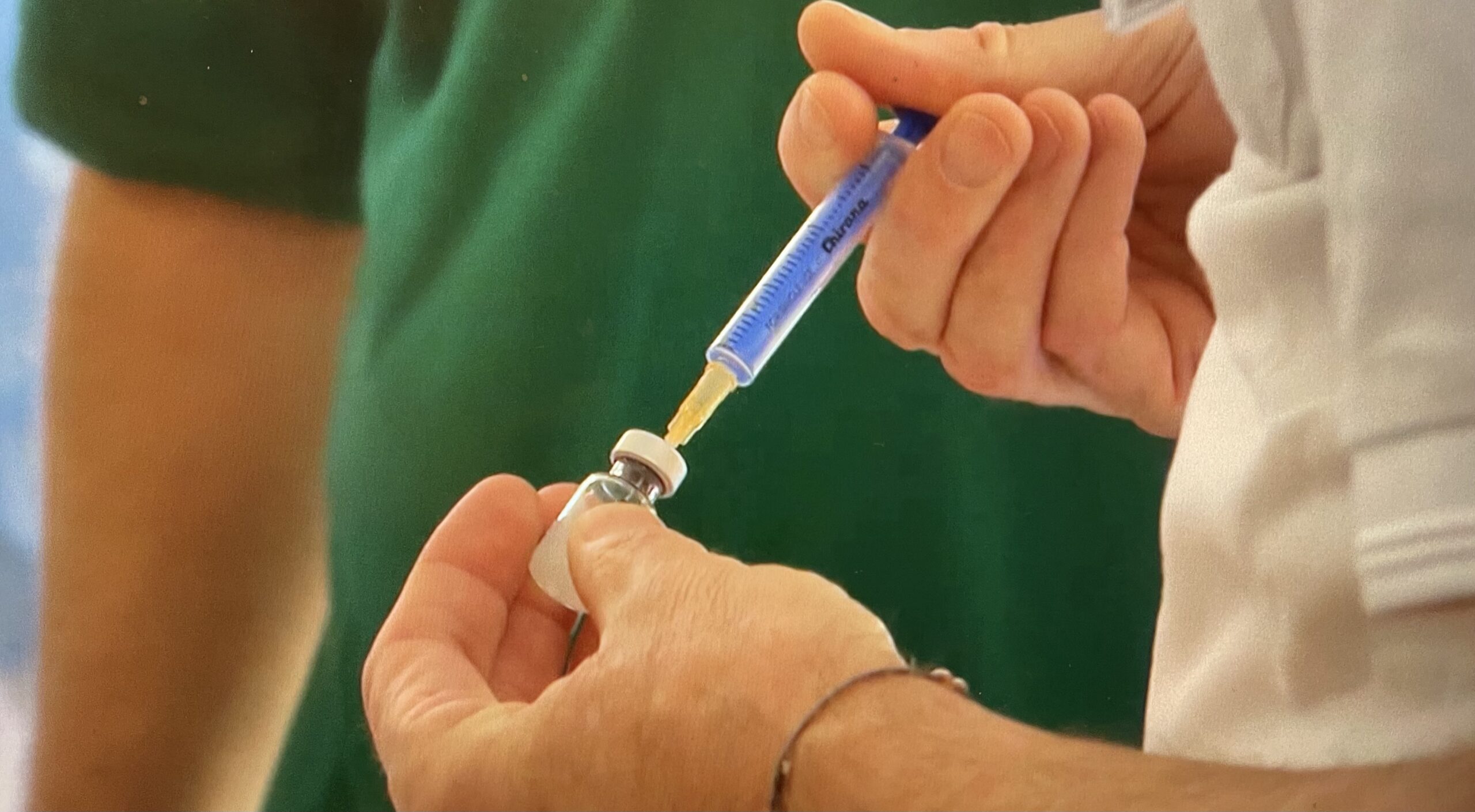The coronavirus can be combated and the pandemic would end. But for this to happen, other protective measures are needed in addition to effective vaccination.
The covid pandemic will not end by a successfully completed vaccination campaign alone. That’s what researchers have calculated. While relaxations in infection control measures are justifiable once a large proportion of the population has been vaccinated with some success, they say. However, mask-wearing, spacing and limited lockdowns cannot be dispensed with completely for the time being if the incidence of infection is not to flare up again, Matt Keeling of the University of Warwick calculates using Great Britain as an example in the specialist journal “Lancet Infectious Diseases”.
The scientists have attempted to model how the pandemic in the United Kingdom would progress into 2024, when the adult population should be gradually vaccinated and eventually be on average 85 percent protected against infection with the coronavirus. Even in that case, the risk of infection does not disappear at all unless further protective measures are maintained, the scientists calculate: In the case of a comprehensive relaxation, the infection incidence will level off in such a way that waves of increasing new infections will be observed again and again.
This is due to the fact that no vaccination achieves complete protection in all vaccinated persons, the authors explain. They had calculated various scenarios in which a more or less large percentage of different age subsets of the population is gradually vaccinated. For the most optimistic case, for example, they expect 95 percent of those over 80, 85 percent of those 50 to 79 and 75 percent of those 18 to 49 to be vaccinated. The model assumes 88 percent vaccination coverage, a value chosen based on assumptions from clinical trials. Even in this optimistic scenario, however, the R-value (expressing the number of new people infected by an infected person) will be 1.58 if no further measures are taken to prevent the spread of the virus. The number could also be higher because the model does not take into account the higher risk of infection of new virus variants such as B.1.1.7 compared to the old pathogen, nor does it take into account a possible decrease in immunity of vaccinated persons some time after vaccination. According to the experts, the theoretical R-value without any vaccination protection is likely to be 3.15 and thus – because of the more infectious variants – higher than at the beginning of the first wave.
The extent to which additional measures alongside vaccination could have an impact is suggested by the forecasts for various relaxation scenarios. For example, the model concludes that significantly more people would die in the pandemic this year, despite vaccination protection in the United Kingdom by 2024, if infection control measures were downgraded to summer 2020 levels as early as April 2021. A hypothetical immediate complete opening would be fatal, according to the modeling, and could lead to new waves of infections even in the partially vaccinated population, killing over 1600 people per day in the UK. Relaxing only in five or ten months, with no change in the vaccination pace, lowers this calculated number to under 450 and under 50 deaths, respectively.
It is important not only to continue the vaccination campaign and at the same time not to relax other measures too early, say the authors of the study. This still applies even if large parts of the population have already been vaccinated. However, with vaccination and measures such as mask-wearing, spacing, regular testing and limited local restrictions if necessary, further waves of infection can be prevented or kept low.
- source: sprektrum.de/picture: pixabay.com
This post has already been read 1669 times!



